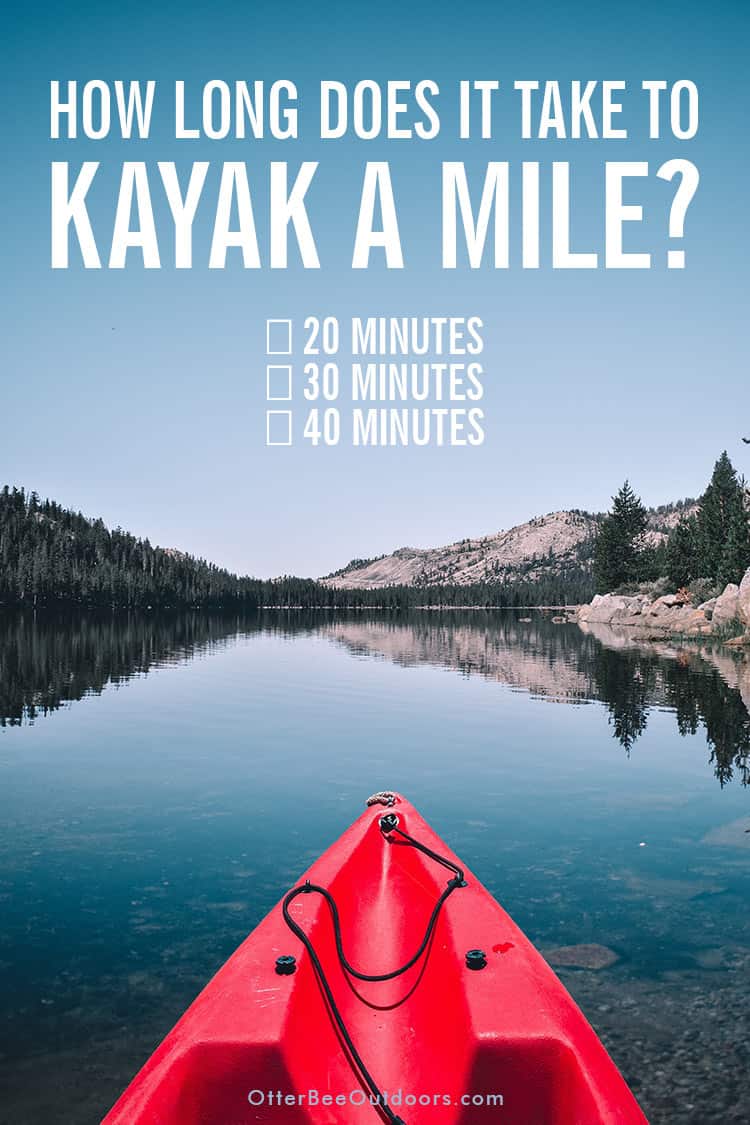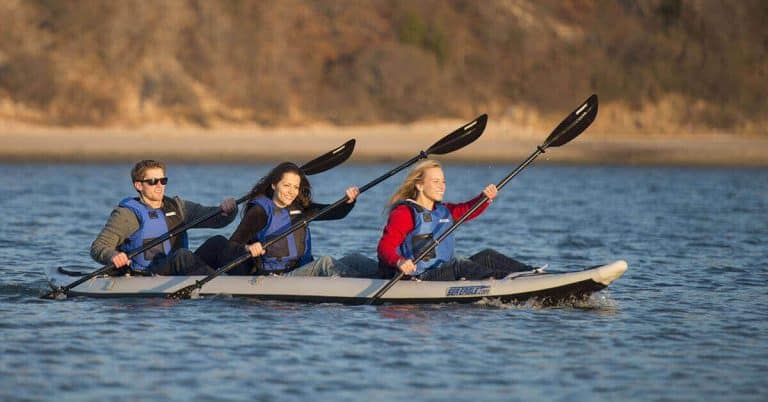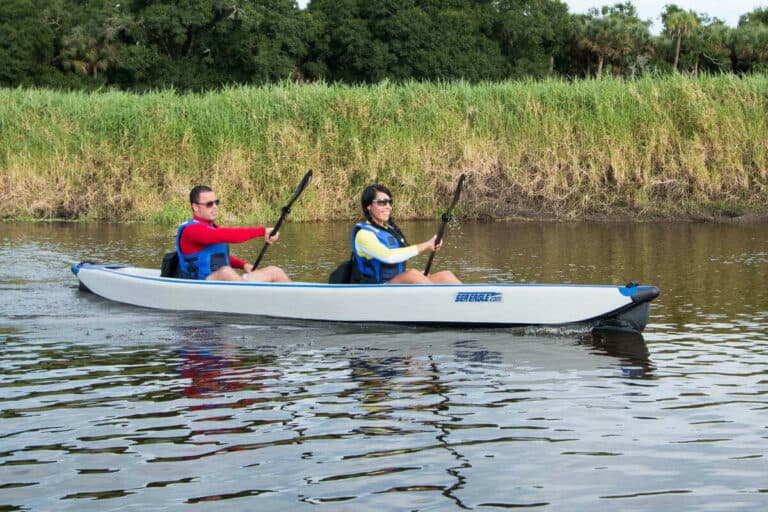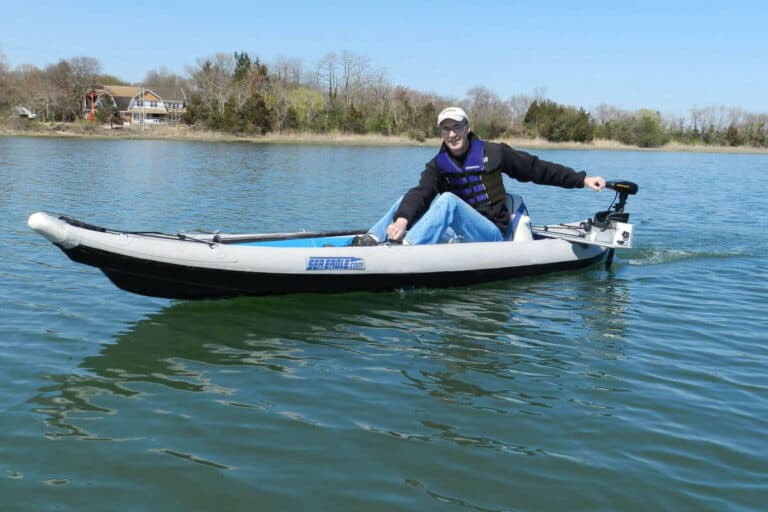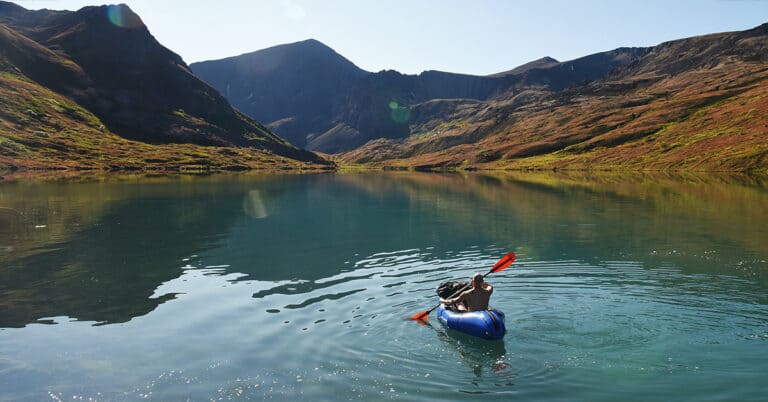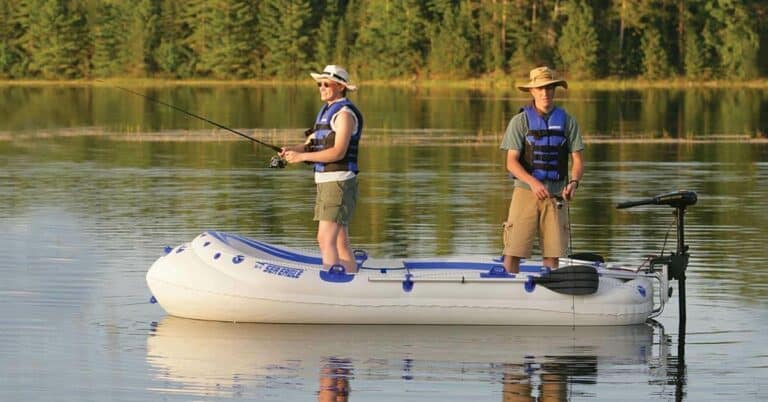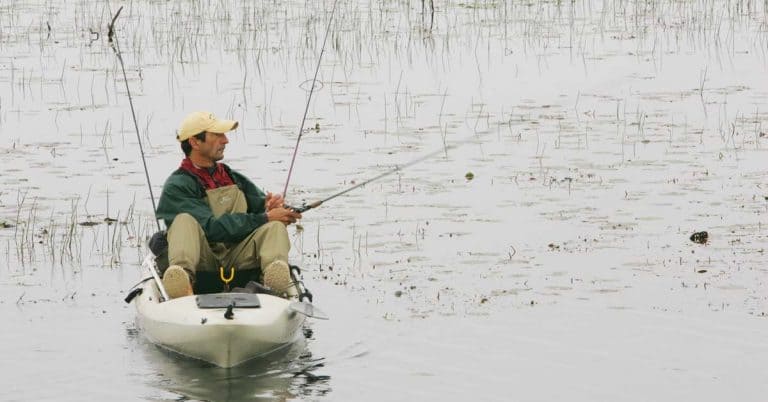Disclosure: I am compensated for purchases made through some links on this site. Click for details.
It’s natural to wonder how long a kayak trip will take from the put-in to the take out point, a distance measured in miles. If you know how long it takes to kayak a mile, you can calculate how long the kayak trip will take. Right?
It’s not that easy.
Will you be kayaking on a lazy stream or fast-flowing river? Tranquil lake or ocean? Will you stop along the way to explore or picnic? Is it your first time in a kayak or are you an expert? There are multiple factors to consider when determining how long it takes to kayak a mile. We’ll look at them but first I’ll give you a quick and dirty answer.
I looked at a number of kayak rental websites and forums to come up with a rough answer…
For most kayak trips, you’ll be able to kayak one mile in 30-40 minutes. Though an experienced kayaker may easily complete the trip in half the time.
Most kayak rental companies will let you know how long their trips will take. Check their website or better yet, call for the most accurate estimate that will take weather and water conditions into account.
The speed at which you can travel a mile in a kayak will be impacted by many of the following factors…
Physical Abilities
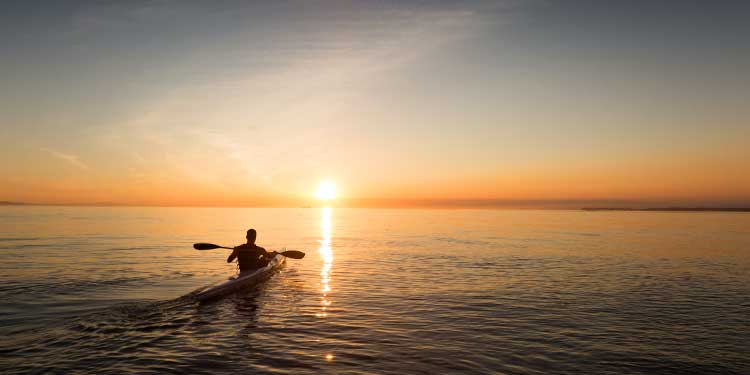
We all have different physical capabilities which often change with age, exercise, and diet. A child’s paddling abilities will likely improve in their 20’s and I can attest that the aches and pains I experience in middle age make me slower than I was when I began kayaking in my 20’s.
Kayaking Experience
Are you a novice or expert paddler? Experience level will greatly affect how fast you can kayak a mile. With experience, muscle coordination is developed and paddling techniques are learned. Not to mention an understanding of the water, kayaks, and gear.
Weather and Water Conditions
Weather conditions often affect water conditions so I’ve lumped these two together though there are Man-Made Water Conditions that we’ll cover in the next section.
Weather and water conditions to consider when calculating how long it will take to kayak a mile…
- Weather conditions impose different concerns depending on whether you’re on a river, lake, or ocean/sea.
- In times of dry weather, water conditions are likely to be different. Rivers may have areas that are too low to paddle through. Forcing you to carry your kayak and gear periodically.
- Winds at your front and sides can slow you down significantly.
- Favorable winds from behind can speed your journey.
- Choppy water will slow your speed.
- Strong ocean currents can slow your progress.
- Higher river waters often mean stronger currents that can increase your speed unless mishap occurs. Swollen rivers often impose dangers. You can easily be driven into obstacles or floating obstacles like trees and debris can find you.
- Rain can often slow you down and even force you to find temporary shelter.
It’s best not to kayak in severe weather. Always keep an eye on the weather in your area and areas upstream if you’re on a stream or river. Floodwaters and lightning are extremely dangerous.
Man-Made Water Conditions
Water conditions aren’t always caused by nature. Water release from a dam can greatly change river conditions in seconds turning a slow-moving stream into treacherous rapids.
People drown every year. It’s important to know water release schedules and pay attention to the warning sirens. Water release schedules may be updated throughout the day and can change without warning due to unanticipated weather conditions.
Obstacles in the Water
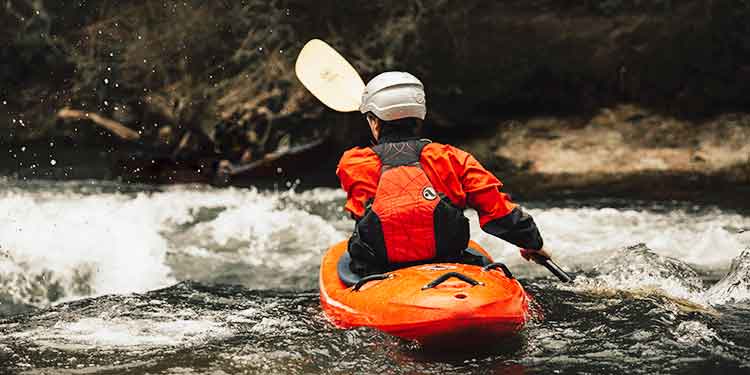
There’s no secret here. Obstacles will slow you down. Obstacles can severely reduce the speed at which you can paddle a mile.
Common obstacles include:
- Shallows where your kayak may drag or get stuck.
- Rapids
- Portages
- Rocks and boulders
- Logs
- Animals… I’ve had cows block passage in a river.
- Trash
- Locks
Unfamiliar Water
Unfamiliar water can slow you down. It’s far easier to navigate familiar water. You know which obstacles will slow you down and which waters flow faster. There’s also less need for referencing a map.
Type of Kayak
Different bodies of water and water conditions call for different types of kayaks. Knowing which kayak to use will reduce the time it takes to paddle a mile.
A shorter kayak would make it easier for you to maneuver faster-moving water with obstacles but would track poorly on a still lake making it slower than a longer kayak.
Narrower, longer kayaks are faster on relatively calm large bodies of water. The narrower kayak has less contact with the surface of the water and the length allows it to track straighter. Though kayaks over 11′ aren’t the best choice in many streams and small rivers. A wider kayak would provide much-needed stability and a shorter length allows for maneuverability around obstacles and in ever-changing water conditions.
Sit-in kayaks are faster than sit-on-top kayaks. Sit-in kayaks have a lower center of gravity which increases stability. They also offer less wind resistance.
Inflatable kayaks are also another option that many people gravitate toward.
Related Content: Design Features To Look For In An Inflatable Kayak
Kayak Paddle
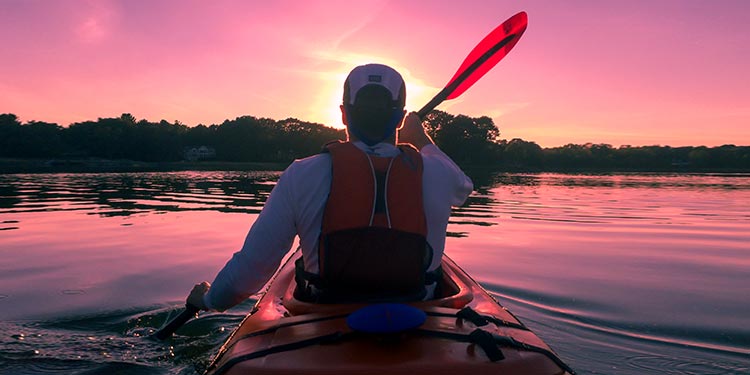
The length, weight, and design of your kayak paddle will influence how long it takes you to kayak a mile.
Kayak Paddle Length
Having the right length paddle is important. It’s inefficient to have a kayak paddle that’s too short or too long. Your speed will decrease.
A person’s height and the width of the kayak influence paddle length. The taller the person and the wider the kayak the longer the kayak paddle.
One other factor helps determine the correct paddle length. The type of paddling style. Are you an aggressive or leisurely paddler?
High or Low-Angle Paddles
High-angle paddles: Aggressive, faster paddlers tend to take high-angle paddling strokes where the top hand elevates above shoulder level. Because the paddle is entering the water closer to the kayak a shorter paddle length and a wider blade are used over that of a leisurely paddler.
Low-angle paddles: Relaxed, leisurely paddlers take strokes with a lower angle where the top hand stays below shoulder level. With this style stroke, the paddle enters the water further away from the kayak. A longer paddle is needed for a low-angle paddler.
Kayak Paddle Sizing Charts
What length kayak paddle should you be using to maximize your mile per hour time on the water? The following kayak paddle sizing charts will help you determine the right length paddle for your paddling style and kayak.
| Low-Angle Paddle Sizing Chart | |||||
|---|---|---|---|---|---|
| Kayak Width | Under 23″ | 23″ to 28″ | 28″ to 32″ | Over 32″ | |
| Paddler’s Height | Recommended Paddle Length | ||||
| Under 5′ | 210cm | 220cm | 230cm | 240cm | |
| 5′ to 5’6″ | 215cm | 220cm | 230cm | 240cm | |
| 5’6″ to 6′ | 220cm | 220cm | 230cm | 250cm | |
| Over 6′ | 220cm | 230cm | 240cm | 250cm | |
| High-Angle Paddle Sizing Chart | ||
|---|---|---|
| Kayak Width | Under 26″ | Over 26″ |
| Paddler’s Height | Recommended Paddle Length | |
| Under 5′ | 200cm | 220cm |
| 5′ to 5’4″ | 205cm | 220cm |
| 5’4″ to 6′ | 210cm | 220cm |
| Over 6′ | 215cm | 230cm |
Note: Variations in sizing and length suggestions exist between brands. It is best to visit their websites for the most accurate specifications.
Kayak Seat Height and Paddle Sizing:
Some sit-on-top kayaks especially fishing kayaks may have a high seat position. If you have a kayak with a higher seat position, consider a paddle that is 10cm longer to compensate for the added distance to the water.
Kayak Paddle Design
The types of materials used, blade style, blade shape, and shaft choice can all affect your performance as a paddler. Lighter weight materials, larger blades, feathered blades, and bent shafts can all increase your speed, thus decreasing the time it takes you to kayak a mile.
Overall Weight
The overall weight of your kayak, cargo including necessary kayak safety equipment, you, and any passengers will have an effect on your speed. To increase your speed, keep things as light as possible.
Kayaking Passengers
Kayaking passengers can slow you down. Maybe you’re in a two-man kayak or you have a younger child or your dog along for the ride. Whatever the case, passengers can impact your speed.
Conclusion
The average time it takes to leisurely kayak a mile is 30-40 minutes though times can vary greatly for many reasons outside your control.
Give yourself plenty of time to enjoy your trip but pace yourself. Pick up the pace if you find you’re not going to be at your take-out point on time or before dusk. If you’re running ahead of time, take time to relax and float along.
If you want to reduce the time it takes you to paddle a mile, develop your strength and skills, control the factors within your power like paddle length and type of kayak, and learn to minimize delays in conditions outside your control.
For safety, it’s good to know how long it takes you to kayak a mile. You want to get to the take-out point on time and before dusk. Let others know when you’ll be off the river as well.
